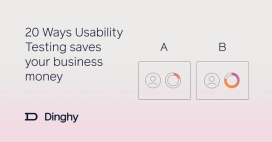- User Research
- Qualitative Research
- User Testing
You Can Conduct Usability Testing on Your Product at an Early Stage – Here's How


The earlier you involve users, the more impactful their feedback becomes. Even in the conceptual stages, where ideas are just starting to take shape, user insights can provide invaluable direction. It's not about having a polished product to showcase; it's about understanding your users' needs, preferences, and pain points from the outset. I understand it’s uncomfortable to show something that not complete but that’s the best way to spearhead your product forward.
One of the most common misconceptions is that testing should only occur once the product is fully developed. However, by then, significant time and resources may have been invested in a direction that could have been better informed by user input earlier on. By integrating user testing into every stage of the design and development process, you ensure that your efforts are aligned with what truly matters to your audience.
Early testing
By early, how early are we talking?
A sketch on a paper.
Create a simple sketch or series of sketches that represent the key screens or interactions of your product. These sketches don't need to be elaborate; they should merely convey the basic structure and functionality of the design.
- Recruit 3-5 people who form part of your target audience.
- Present the paper prototype to the participant and guide them through the tasks or scenarios you've prepared. Encourage them to think aloud as they interact with the prototype, sharing their thoughts, reactions, and suggestions in real-time.
- Use the insights gathered from the testing sessions to iterate on your paper prototype.
- Make revisions based on the feedback received, addressing any usability issues or pain points identified by participants.
Early testing doesn't require sophisticated prototypes or elaborate setups. Even simple wireframes or paper sketches can be enough to elicit valuable feedback. User feedback at this stage is like gold dust. It helps to refine ideas, prioritize features, and steer clear of costly missteps down the line.
Testing Often: Iterating Towards Perfection
But testing isn't a one-and-done affair; it's an iterative process that unfolds throughout the product lifecycle. This iterative journey entails a continuous loop of gathering insights, refining designs, and validating assumptions at every turn of the product lifecycle. By embracing this approach, teams cultivate a culture of agility and adaptability, enabling them to swiftly pivot and adjust course in response to user feedback. It's this relentless pursuit of perfection through iteration that propels products towards meeting—and exceeding—user expectations.
Continuous testing: Testing in cycles
Continuous testing involves the integration of testing activities seamlessly throughout the development lifecycle, ensuring that quality assurance is not just a phase but an ongoing, iterative process. At its core, continuous testing operates in cycles, each cycle encompassing planning, execution, evaluation, and adaptation. To effectively implement continuous testing, teams must establish automated testing frameworks and pipelines that enable rapid feedback loops, allowing for early detection of defects and expedited resolution.
How dinghy implements continuous testing
At Dinghy we break down testing into small manageable cycles. We test 1 feature or 1 page during each cycle.
The item goes into Usability tests, the feedback is uploaded instantaneously to the prototype. This allows the entire team to see what the client is saying in real time whilst making provision to change certain elements.
When all feedback is provided at the end of the sessions. The researcher and designer sit down, cluster themes and ideate solution. The prototype is updated and the prototype for the next cycle is created. All this takes place in the course of one week.
Testing early, often and continuously isn't just a best practice— It's a mindset. A commitment to putting users at the center of the product development process. Whether you're sketching wireframes, coding prototypes, or fine-tuning features, never underestimate the power of user feedback. It's the compass that guides you towards creating exceptional experiences that delight users and drive business success.
So, no matter what stage your product is at, remember: test early, test often, and test continously. Your users—and your bottom line—will thank you for it.

